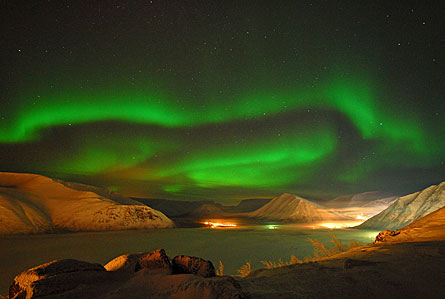- More than 2 years ago
The sudden burst of color seen in the sky as the aurora borealis and the aurora australis has not only dazzled, but has also puzzled. Specifically, scientists have long debated how the brightening is triggered in outer space. Now, a team has identified what caused the sudden flare-ups in the polar auroras last February.
“The findings change our understanding of how the auroras are generated,” says Vassilis Angelopoulos of the University of California, Los Angeles.
Reporting in the July 25 Science, Angelopoulos and his colleagues suggest that when the lines of Earth’s magnetic field reconnect, a large amount of energy spreads through the outer atmosphere, shooting a jet of charged particles toward Earth to light up the polar auroras.
Scientists knew that interactions between the sun’s and Earth’s magnetic fields caused the auroras to glow. Space physicists have not known how the energy that causes the auroras is released during what space physicists call substorms — sudden, violent eruptions in the space environment outside Earth’s atmosphere.
By using five satellites and a ground-based observing network in Alaska and Canada that are part of NASA’s Time History of Events and Macroscale Interactions During Substorms, or THEMIS, project, Angelopoulos and his colleagues watched — for the first time — how and where in space the substorms originated.
Substorms start when solar energy is stored for several hours as magnetic energy in the Earth’s magnetotail — a windsock-shaped region of the Earth’s magnetic field. The energy is released explosively when the Earth’s magnetic field lines above and below the magnetic equator reconnect within the magnetotail.
The team was surprised to learn that the reconnection, which triggered the conversion of stored magnetic energy into kinetic energy and heat inside Earth’s atmosphere, is the first event in a series leading to the polar auroras.
The converted energy, in the form of charged particles, then accelerated down the magnetosphere toward Earth. In less than two minutes, the researchers report, the energized particles collided with the atmosphere, sparking the aurora flares.
“This is the first time that we are able to ‘nail’ the time sequence of the events during a substorm and identify the trigger,” Angelopoulos says. He and other scientists expect the results will help better predict space weather, which impacts satellite communications and astronaut safety.








